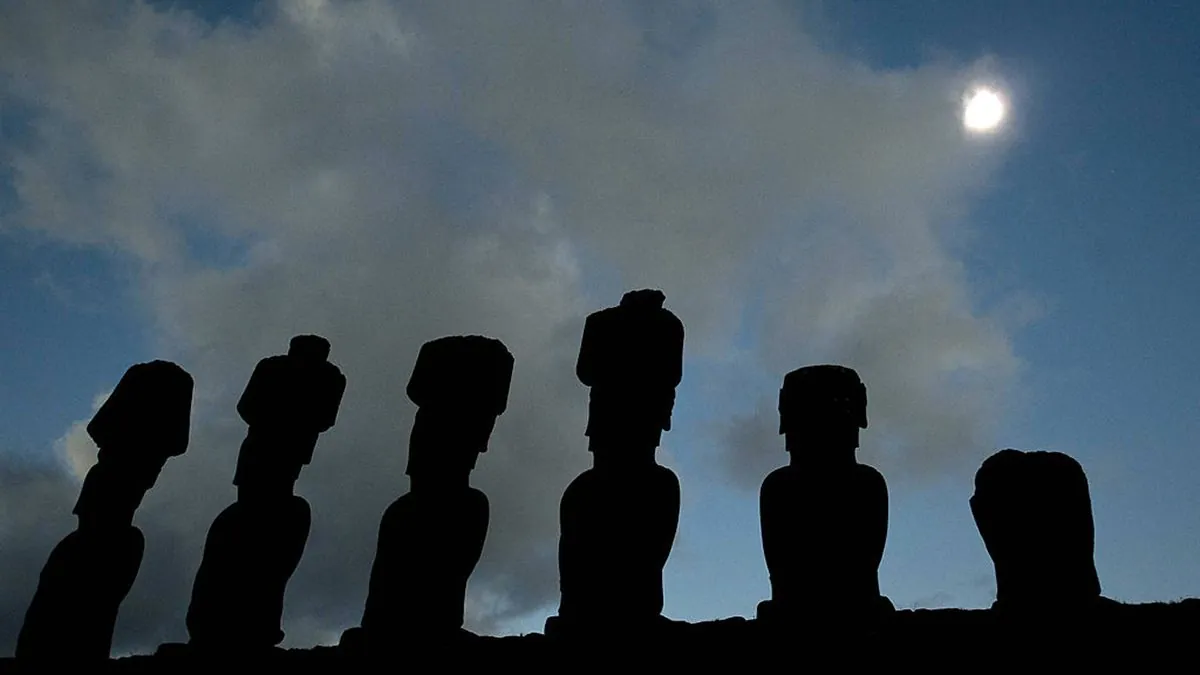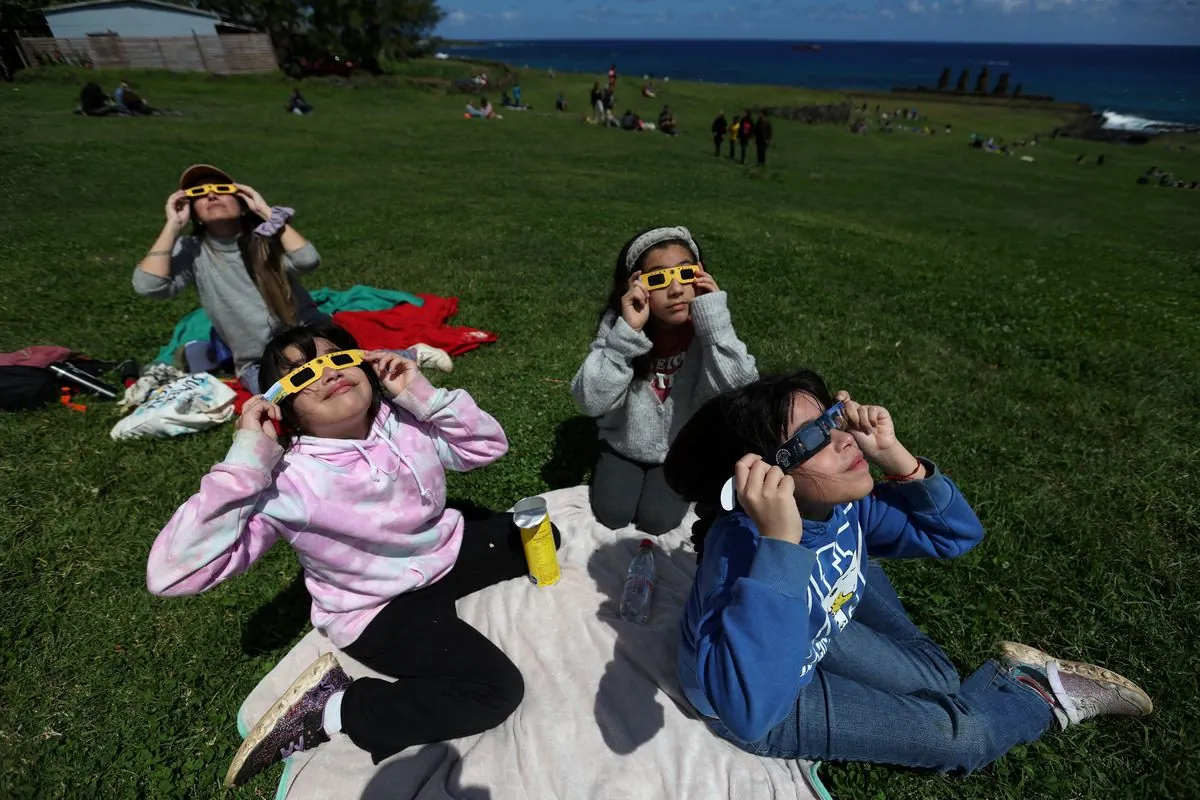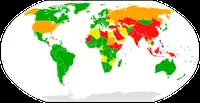Pacific "Ring of Fire" Eclipse Dazzles Easter Island and South America
A rare annular solar eclipse created a "ring of fire" spectacle over Easter Island and parts of South America. Observers gathered to witness this celestial event, visible to only 175,000 people in its direct path.

On October 2, 2023, a celestial spectacle unfolded over the vast Pacific Ocean as an annular solar eclipse created a stunning "ring of fire" effect. This rare event was fully visible from Easter Island and a small region near the southern tips of Chile and Argentina, offering a breathtaking view to a select few.
An annular eclipse occurs when the moon is at its farthest point from Earth, unable to completely obscure the sun. This results in a dark silhouette surrounded by a brilliant ring of sunlight, known as the antumbra or "ring of fire." Such eclipses happen approximately every 18 months somewhere on Earth, making each occurrence a special event for sky watchers.
Easter Island, also known as Rapa Nui, provided a unique backdrop for this celestial show. The island, one of the most remote inhabited places on Earth, is renowned for its enigmatic Moai statues, which were carved between 1250 and 1500 AD. With a population of about 7,750 as of 2017, the island's residents and visitors were treated to an unforgettable experience.
"The ring of fire is a once-in-a-lifetime experience. Especially here in Rapa Nui with the Moai in the background it will be spectacular."
As the moon's shadow darkened the sky, people on Easter Island gathered outdoors, chanting and playing music while wearing protective eyewear to safely observe the phenomenon. The enthusiasm was palpable, as described by local resident Alejandra Astudillo: "I got excited when people were shouting. Everybody's fervor made it more exciting."

In Argentina, the town of Las Horquetas in Santa Cruz Province was one of the few locations in the direct path of the eclipse. Esteban Sanchez, a local observer, shared his awe: "It was an extraordinary phenomenon that's not often seen. This is the first time I've seen that and it was really good."
The event's rarity is underscored by the fact that only an estimated 175,000 people lived within the path of the eclipse's annularity. While the southern half of South America, parts of Antarctica, and Hawaii experienced a partial eclipse, the full "ring of fire" was visible to a fortunate few.
This annular eclipse, lasting just a few minutes, offered more than just a visual spectacle. Such events have historically been crucial for scientific discoveries and continue to provide valuable data for researchers. NASA, for instance, uses observations from solar eclipses to study the sun's corona.
As the Pacific Ocean, covering approximately 63 million square miles, served as the primary stage for this cosmic event, it's worth noting that the next total solar eclipse visible from Easter Island won't occur until July 11, 2080. This underscores the significance of the October 2023 annular eclipse for the island's residents and visitors.
The "ring of fire" eclipse serves as a reminder of our planet's place in the cosmos and the awe-inspiring phenomena that nature provides. From the ancient Moai statues of Easter Island to the southernmost city of Ushuaia in Argentina, this event united diverse locations in a shared moment of celestial wonder.


































